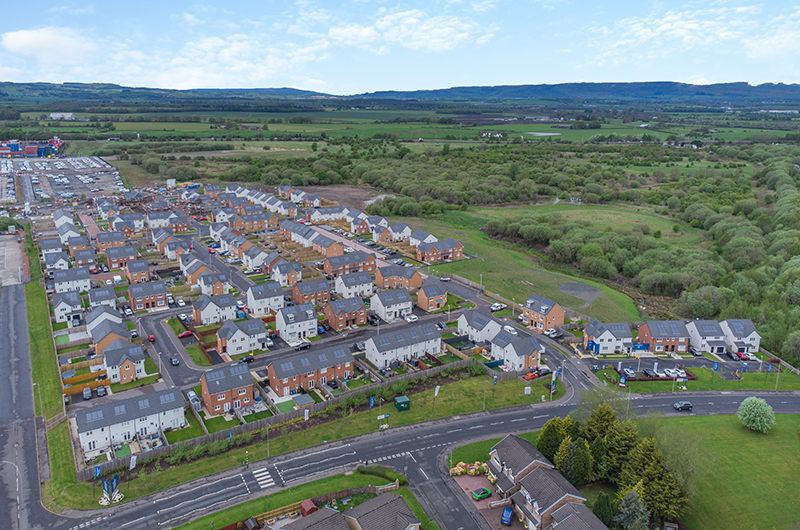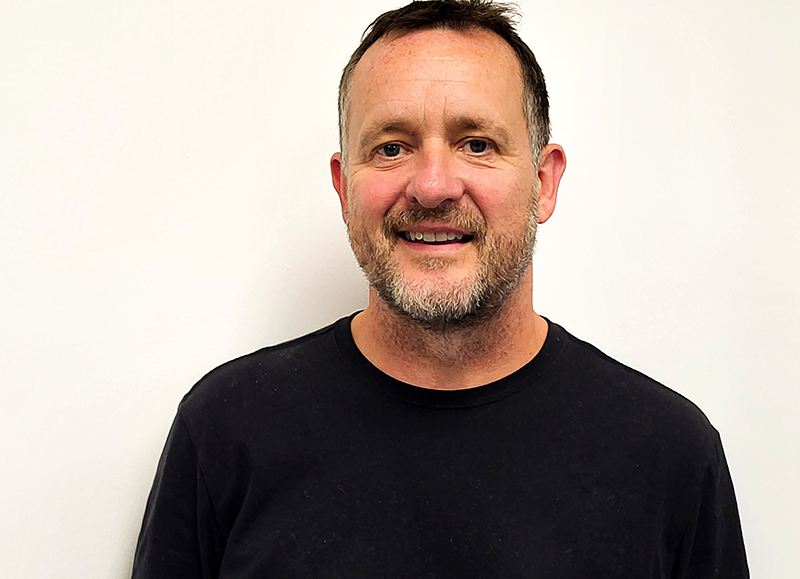World
Partnership model to drive Keepmoat’s Scottish expansion aspirations | Project Scotland

HOUSEBUILDER Keepmoat has told Project Scotland that the company plans to use its partnership model to help drive major expansion plans north of the border in the coming years.
Scotland is currently a less mature region of the Keepmoat group when compared with other UK areas, but that looks set to change as the business aims to play its part in addressing the nation’s housing crisis.
The firm currently has three live developments in Scotland – one in Ravenscraig, North Lanarkshire; one in Paisley; and a large site in Glenrothes, which will comprise over 400 units.
Keepmoat also recently completed the first phase of 154 units at NorthBridge, Sighthill, with the second phase due to get underway shortly. A further three outlets are scheduled to start in Scotland before the end of the year.
Tim Metcalfe is regional MD of Keepmoat in Scotland. A chartered accountant, Tim has over 25 years’ experience in the housebuilding industry and has held senior financial and operational roles with businesses including Avant and Robertson. He joined Keepmoat in October 2022, originally as finance director, before quickly being tasked with leading the company’s ambitious expansion plans in Scotland.
“Keepmoat is a partnership housebuilder,” Tim told Project Scotland. “What we mean by that is we have established some deep-rooted relationships over a number of years, particularly with local authorities and housing associations, but also with other long-time partners such as landowners and anyone we can do repeat business with.
“That partnership model means that when we approach buying a new piece of land, we look for opportunities to really build on the partnership. For example, rather than do the minimum Section 75 standard number of affordable houses, we will look to deliver more than that. There’s lots of advantages to that. One is that the country needs more of those affordable homes, but also, it’s what we’re good at. It helps our business because it de-risks our exposure to the private sales market. Not all developers are as active in that space as we are. That’s what we consider our USP to be.”


Sustainability is a key consideration. All of Keepmoat’s current active developments boast an Energy Performance Certificate of at least a B rating. Looking ahead, this will improve to A, helping homeowners make further savings on energy bills.
The company recently delivered a 48-unit site in Dalmarnock in Glasgow’s east end where the heating was provided through a district heating system in partnership with regeneration specialist Clyde Gateway. For new sites currently being planned, EV charging points will be installed in every plot and wastewater heat recovery systems will become the norm. Air source heat pumps will also have an important role to play in future.
“Probably the most important thing which doesn’t get as much attention is just the fabric details that we use to build our houses,” Tim added. “We’re putting far more efficient insulation into the properties. The windows are far more efficient. Just the whole fabric of the building means there’s far less heat loss, which means it’s a lot cheaper to heat your home.”
With an underlying shortage of housing, Tim believes price pressure is currently only being suppressed by the cost-of-living crisis and higher interest rates. However, with inflation falling and talk of interest rates coming down, his fear is this will start to stoke up a push on prices soon.


“You might think as a housebuilder I would be happy with that, but it’s not good for the long-term sustainability of the market,” he explained. “I would rather see the supply increase to meet that demand because that drives a much healthier overall marketplace for us to operate in, and one that’s more certain and less prone to booms and busts, which can be incredibly damaging for everyone.
“New build housing will become more and more valuable because of the energy savings. We need more of it to replace the existing stock, and quickly, otherwise we get ourselves into a position where people just can’t afford new builds and they’ll resort to having to buy old, energy-inefficient second-hand housing, which badly needs replaced in some cases.”
Keepmoat’s vision is to build communities and transform lives. Some 1,500 students passed through a large training hub on the Sighthill regeneration scheme. The housebuilder recruited apprentices directly from that hub and helped place a further 15 apprentices with various subcontractors. The firm also works with schools to offer work experience and actively engages with the communities in which it works, with social value interaction a hugely important consideration.
“In terms of how we create a community on our sites, it’s all part of the design,” Tim stated. “We design our sites to make sure things like pedestrians are prioritised over vehicles. We have cycle routes and lots of open space carefully positioned so it maximises use for all members of that community.
“We have just completed a development in Shotts. It’s a location that hasn’t had any new build activity for some years and the existing stock of housing in the town is becoming quite old. We bought a site several years ago and developed new build. The local market is primarily who we’ve sold to.
“When we bought it, we thought we’d be selling to people wanting to commute from Edinburgh and Glasgow, but we found there was a huge demand from local people who (hadn’t had) the opportunity to buy decent quality of home. This provided that and I think the people in that development are happier for it. We’ve noticed a real positive community feel on the site.”
Tim revealed that what homebuyers are looking for has changed in recent years. There’s more underlying demand for gardens and flexible space to facilitate the boom in working from home.
While Keepmoat’s core base is the affordable rather than luxury end of the market, the housebuilder dresses its showhomes in such a way as to highlight how occupants can use space to perhaps fit a desk in the hallway or bedroom.


Project Scotland’s interview with Tim coincided with the Scottish Parliament declaring a housing emergency. He believes that building smaller homes is one of the ways in which Scotland can help tackle the current property crisis engulfing the nation.
“As far as I’m concerned there’s been a UK housing crisis for years if not decades,” Tim said. “Maybe it’s become a bit more acute in recent months. There’s lots of things politically that are factors at play that have perhaps led to this position. The planning system can be a bit slow and clunky, which doesn’t help us bring forward sites as quickly as possible. And I think there’s been a lack of investment in affordable housing over the years.
“We’ll do our best to influence policies that could help get us out of this crisis, but if I just look at what Keepmoat can do on its own: when we look to buy new land, we tend to put smaller product on it than most of the competition. We don’t build large four or five-bed detached units; we tend to build two and three-bed terraced units in the main, and the occasional four-bed. We’re providing on the same piece of land homes for more families than perhaps some others are. The partnership model allows us to push more affordable housing for local authorities and housing associations.
“We’re providing the homes that people need, and more of them.”





